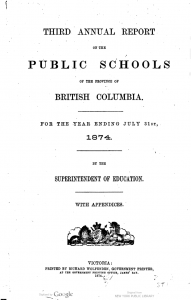Artificial intelligence is a cornerstone of educational technology, making it crucial to critically evaluate its scope and limitations. Understanding the impact of machine intelligence on both our own and our students’ learning and educational development is vital. In this post, we explore the differences in responses between humans and ChatGPT to gain insights and reflect on its implications.
ARTIFICIAL INTELLIGENCE – click to read more.
While both my responses and ChatGPT’s answers offer an informative explanation of AI-related topics, my responses are more personalized and reflect a deeper connection to the subjects. I try to humanize the technical explanations, emphasizing not just the facts but also offering my perspective on what makes these concepts important in practical, real-world contexts. For instance, when discussing Alan Turing, I highlight his contribution to challenging the boundary between human and machine thought, which mirrors the broader implications for AI today. I bring an emotional and philosophical dimension to the discussion, which goes beyond merely summarizing his work.
In contrast, ChatGPT’s responses are more neutral and concise. It excels in providing factual summaries that are direct and clear. However, ChatGPT’s responses can sometimes lack a human touch in terms of the emotional depth or personal insights that I attempt to bring out, such as the deeper significance of concepts like creativity and ethical reasoning in human intelligence versus machine intelligence.
When addressing more technical aspects, such as machine languages versus human languages, ChatGPT is highly efficient at providing structured, clear contrasts. Yet, I try to incorporate broader societal and emotional implications—how programming languages prioritize logical clarity, while human languages enable rich, empathetic communication.
Regarding machine learning versus human learning, ChatGPT’s version is very factual and precise, whereas I focus on how human learning integrates intuition, culture, and personal motivations, offering a more holistic understanding. In summary, ChatGPT’s responses are technically sound but lack the nuance, reflection, and personal insights that a human like me might bring to these topics.
References:
Turing, A. M. (1950). Computing machinery and intelligence. Mind, 59(236), 433-460. https://doi.org/10.1093/mind/LIX.236.433
McCarthy, J. (2007). What is artificial intelligence? Stanford University. https://www-formal.stanford.edu/jmc/whatisai/whatisai.html
UBS. (n.d.). Meet the Nobel laureates in economics: Do we understand human behaviour? UBS. https://www.ubs.com/global/en/our-firm/people-and-culture/nobel-laureates-in-economics/understanding-human-behaviour.html
BBC News. (2016, January 24). AI pioneer Marvin Minsky dies aged 88. BBC News. https://www.bbc.com/news/technology-35301023
Hao, K. (2020, December 4). We read the paper that forced Timnit Gebru out of Google. Here’s what it says. MIT Technology Review. https://www.technologyreview.com/2020/12/04/1013359/timnit-gebru-google-ai-diversity-paper/
Harris, J. (2018, September 27). Languages vs. programming languages. Medium. https://medium.com/@jackharris_/languages-vs-programming-languages-35b582b4d6e9
Chollet, F. (2019). On the measure of intelligence. arXiv. https://arxiv.org/abs/1902.04197
Heilweil, R. (2020, March 5). Why algorithms can be racist and sexist. A computer can make a decision faster. That doesn’t make it fair. Vox. https://www.vox.com/recode/2020/3/5/21165938/algorithm-bias-ai-discrimination-racism-sexism
Buolamwini, J. (2019). Artificial intelligence has a problem with gender and racial bias. Here’s how to solve it. Wired. https://www.wired.com/story/artificial-intelligence-problem-with-bias/

